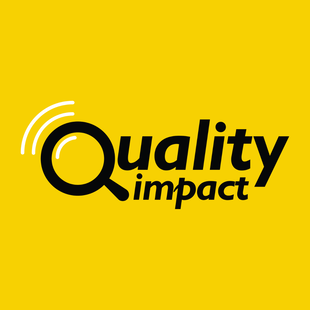
Strengths and weaknesses of the checklist approach to auditing
Progress indicator

Andrew Ward CQP MCQI examines the benefits and challenges of taking a checklist approach to audits.
Auditing is the process of asking a question, receiving an answer and then seeking confirmation of the answer. That means the format of the question is critical to determining its effectiveness for finding the information needed to achieve the audit scope.
A checklist is an ordered list of items or questions designed to gather specific information and should be arranged logically to guide a person through a process. It provides a clear and organised method for ensuring thoroughness, reducing the likelihood of missing important details during questioning. Its use also promotes consistency, accuracy and accountability – but only when used in the appropriate context.
Advantages of checklists
Checklists are often used as a source of questions during audits, and they offer several advantages.
- Audit preparation: Checklists speed up audit preparation. Those who have spent hours preparing questions for audits will appreciate the convenience of having a pre-designed checklist. However, auditors must still review the checklist to ensure the questions are relevant and valid for the specific audit scope.
- Prevent missed steps: A well-prepared checklist acts as a roadmap, ensuring that important steps and risk mitigation controls are not overlooked during the audit.
- Support auditor knowledge: A checklist on a specific process can enable an auditor unfamiliar with the process to conduct a competent audit.
- Complex audits: Multiple checklists can be used in a single audit to cover a wide range of topics, including complex issues such as interface management with other systems, processes or projects.
- Ensure consistency: Checklists help maintain uniformity across similar or repeat audits, allowing for better comparisons over time and identifying potential trends towards noncompliance.
- Speed up the process: Checklist questions are generally quicker to ask and answer than open-ended audit questions. Responses are easier to record, as they are typically less detailed.
- Facilitate delegation: A lead auditor can delegate specific sections of a checklist to other auditors without any ambiguity, ensuring clear accountability.
- Ease preparation: A checklist can be prepared or reviewed by a non-auditor who understands the process, saving the auditor time in audit preparation.
"The checklist approach to auditing offers many advantages, but also has notable weaknesses, particularly when it fosters a mechanical, tick-box mentality or limits professional judgement."
Potential weaknesses
With so many advantages of using checklists in audit, why do all audits not use them? Simply because checklists have several weaknesses as well that must be considered.
- Direct questions: Checklist questions are often direct, requiring binary answers such as ‘compliant’ or ‘noncompliant’, or ‘yes’ or ‘no’, which can lead to a tick-box mentality and superficial responses.
- Risk identification: Underlying risks may be harder to identify and examine if they are not included in the checklist, as the checklist can limit broader thinking by steering the auditor towards specific answers.
- Suitability: Checklists are often generic to allow for wider use within a company. This can result in checklists that do not fully meet the specific requirements of a given audit.
- Complexity: Checklists may be overly detailed, containing more questions than necessary. This can result in wasted time, as the auditor is required to complete every item on the list.
- Lack of flexibility: Checklists can reduce the auditor’s ability to be flexible in finding process weaknesses, as the rigid structure discourages deeper investigation beyond the set questions.
- Effect on auditor: Auditors may become overly reliant on checklists, leading them to miss opportunities to exercise professional judgement and critical thinking throughout the audit.
Audit checklists versus inspection checklists
Understanding the differences between audit checklists and inspection checklists is crucial for auditors when selecting the appropriate tool to ensure the audit scope is met.
- Purpose: An audit checklist is used to evaluate the effectiveness of processes and systems, while an inspection checklist focuses on verifying compliance, usually with specific requirements for a single task.
- Complexity: Audit checklists are often broader and more analytical, covering multiple aspects of a business. Inspection checklists are more focused on ensuring specific requirements are met.
- Level of detail: Audit checklist questions probe more into the effectiveness of processes, and often encourage follow-up questions, while inspection checklists have a high level of detail, often with questions requiring simple ‘yes’ or ‘no’ answers.
- Professional judgement: Audit checklists often require interpretation and judgement, giving the auditor flexibility to adapt the audit based on findings. Inspection checklists are more direct, leaving little room for interpretation.
- Results and records: Audit checklists typically lead to detailed reports with analysis and recommendations. Inspection checklists mainly record whether compliance was achieved and any corrective actions were required.
- Frequency: Audit checklists are used periodically, based on risk assessments. Inspection checklists are used more regularly, often on a scheduled basis, to ensure ongoing compliance. Both types of checklist serve different purposes, and auditors must be familiar with each to know when to use them effectively while maximising time efficiency.
Summary
The checklist approach to auditing offers many advantages, but also has notable weaknesses, particularly when it fosters a mechanical, tick-box mentality or limits professional judgement. To optimise audit effectiveness, auditors must balance the use of checklists with the application of professional curiosity and judgement, ensuring a thorough and meaningful audit is conducted. While a checklist is a valuable tool, it should not replace the critical thinking that underpins high-quality auditing.
Read more great content from this CQI member
Andrew Ward CQP MCQI explains why a strong written business procedure should be front and centre for all organisations, helping to maintain the company image.
The latest from the CQI Podcast

Listen to the Quality Impact podcast, where experts share insights on the evolving role of quality across industries.



